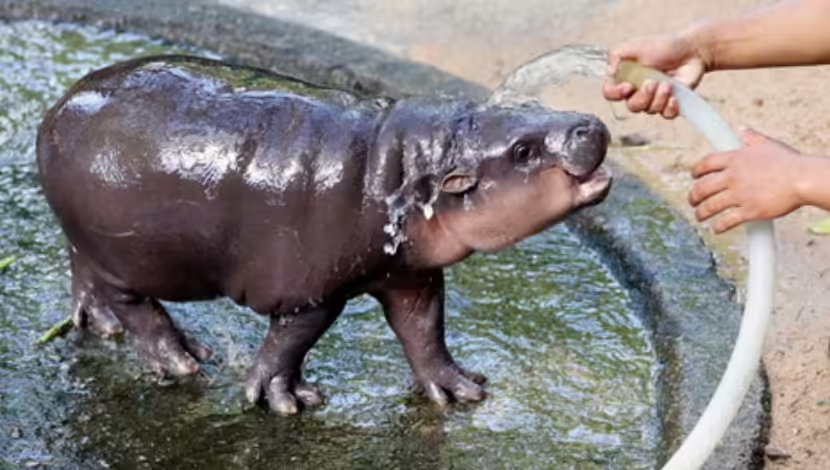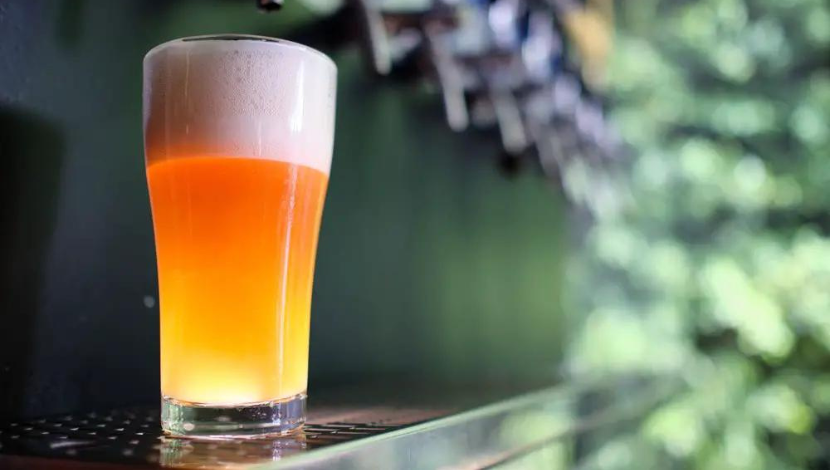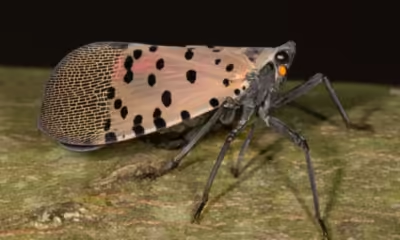Blog
Baby Pygmy Hippopotamus Moo Deng: A Rare Conservation Success Story

The baby pygmy hippopotamus, affectionately named Moo Deng, is one of the newest additions to the endangered species list. This tiny, rare creature hails from Africa’s forests and swamps, where it’s facing serious challenges. In this article, we’ll explore Moo Deng’s story and highlight the conservation efforts aimed at saving these precious animals.
The Birth of Moo Deng: A Ray of Hope
Moo Deng, a baby pygmy hippopotamus, was born in a zoo as part of a breeding program aimed at protecting the endangered pygmy hippopotamus species. This birth is monumental because the species is classified as endangered due to habitat loss, illegal hunting, and a declining population. The birth of baby pygmy hippos in captivity provides a chance to boost the species’ numbers and ensure their survival.
Moo Deng represents the efforts made by zoos and conservationists worldwide to help bring these rare animals back from the brink of extinction. Baby pygmy hippos are born very small and fragile, requiring a great deal of care and attention.
| Pygmy Hippo Stats | Details |
|---|---|
| Species Name | Pygmy Hippopotamus |
| Scientific Name | Choeropsis liberiensis |
| Endangered Status | Endangered |
| Natural Habitat | Forests and swamps of West Africa |
| Lifespan | 30-50 years in captivity |
What Sets the Pygmy Hippopotamus Apart?
The pygmy hippopotamus is significantly smaller than its larger cousin, the common hippopotamus. While the common hippo roams in large herds, pygmy hippos are solitary creatures that live in dense forests and swamps. They are elusive and nocturnal, which makes them difficult to study in the wild.
Baby pygmy hippos, like Moo Deng, are born after a gestation period of about six to seven months. At birth, they weigh approximately 10-14 pounds, a stark contrast to common hippos, which are born at over 80 pounds! These calves are dependent on their mothers for several months before they venture out on their own.
Key Characteristics of Baby Pygmy Hippos:
- Size at birth: Around 10-14 pounds
- Diet: Herbivorous; they mainly eat leaves, roots, fruits, and grasses
- Habitat: Dense forests and swamps in West Africa
- Lifespan: Up to 50 years in captivity
- Behavior: Solitary and nocturnal
The Importance of Conservation Efforts
Pygmy hippos are endangered, with an estimated population of fewer than 3,000 individuals remaining in the wild. Factors like deforestation and illegal poaching for their meat and teeth have led to a sharp decline in their numbers. This makes every birth, like Moo Deng’s, crucial for the species’ survival.
Many zoos have joined international breeding programs to help protect the species. The goal is not only to increase the number of pygmy hippos in captivity but also to raise awareness about their plight and promote efforts to protect their natural habitats in the wild.
Conservation Programs and Their Impact
One of the leading programs is the Endangered Pygmy Hippopotamus Breeding Project. This program partners with zoos across the world to provide a safe environment for these animals. By studying pygmy hippos in captivity, researchers are able to learn more about their needs, behaviors, and health, which can later be applied to those in the wild.
Successful Examples of Conservation
- San Diego Zoo: One of the first zoos to breed pygmy hippos successfully. They have contributed significantly to understanding the pygmy hippo’s care needs.
- ZSL London Zoo: Recently welcomed a pygmy hippo calf, boosting efforts to conserve the species.
- Singapore Zoo: Another breeding success story with consistent pygmy hippo births over the past decade.
Table: Pygmy Hippo Breeding Success in Zoos
| Zoo Name | Recent Births | Conservation Contribution |
|---|---|---|
| San Diego Zoo | 3 baby pygmy hippos in 5 years | Extensive research on care and diet |
| ZSL London Zoo | 1 baby pygmy hippo in 2023 | Habitat protection campaigns |
| Singapore Zoo | 4 baby pygmy hippos in 8 years | Raising awareness in Southeast Asia |
These conservation programs show that with the right care and dedication, the endangered pygmy hippo population can recover, giving hope to the survival of the species.
The Role of Pygmy Hippos in Their Ecosystem
Pygmy hippos play an essential role in maintaining the balance of their ecosystem. As herbivores, they help control the growth of vegetation in their habitats, which in turn supports other species. They also contribute to seed dispersal through their diet of fruits and leaves, promoting the growth of various plant species.
However, the decline in pygmy hippo populations could disrupt this balance. This is why it’s crucial to preserve both the animals and their habitats. Efforts to conserve the pygmy hippo have focused not only on breeding programs but also on restoring and protecting their natural environment.
Natural Habitat of Pygmy Hippos
The forests and swamps of West Africa, particularly in Liberia, Sierra Leone, and Côte d’Ivoire, serve as the primary habitat for the pygmy hippopotamus. These dense and swampy regions provide cover and food for the elusive creatures. However, rampant deforestation and human encroachment have significantly reduced their habitat, putting the species at risk.
Habitat restoration is a key focus area for conservationists, aiming to return the land to a state where pygmy hippos and other species can thrive.
Challenges in Pygmy Hippo Conservation
Despite the successes in captive breeding, there are numerous challenges in the effort to save the pygmy hippopotamus. These include:
- Habitat Destruction: Deforestation for agriculture, logging, and human settlement has severely reduced the pygmy hippo’s natural habitat.
- Poaching: Although illegal, hunting pygmy hippos for their meat and teeth remains a problem in certain regions.
- Climate Change: The changing climate is impacting the swamps and forests where pygmy hippos live, leading to food scarcity and more extreme weather events.
- Lack of Public Awareness: Compared to the more famous common hippopotamus, pygmy hippos receive less attention from the general public, which hinders conservation funding and efforts.
List: How You Can Help Pygmy Hippos
- Support conservation organizations: Donate to groups focused on protecting endangered species like pygmy hippos.
- Raise awareness: Educate others about the endangered status of pygmy hippos and the importance of their conservation.
- Visit zoos and sanctuaries: Support zoos that are part of international breeding programs to help pygmy hippos thrive.
- Reduce your environmental footprint: Deforestation is a major threat to pygmy hippos. Reduce your consumption of products linked to habitat destruction.
The Future for Pygmy Hippos and Moo Deng
While the situation for pygmy hippos in the wild remains critical, there is hope on the horizon thanks to breeding programs and conservation efforts. Moo Deng’s birth is a reminder that with the right interventions, we can prevent species from becoming extinct.
The next steps are clear: continue to support these efforts, raise awareness, and push for stronger protections for the habitats that pygmy hippos rely on. By combining captive breeding with habitat conservation, it is possible to give baby pygmy hippos like Moo Deng a fighting chance for survival.
-

 Sport5 months ago
Sport5 months agoIs Christie Sides Married? Exploring the Personal Life of a Renowned Basketball Coach
-

 Food5 months ago
Food5 months agoNew Restaurants in Canton, CT – 2024
-

 Blog5 months ago
Blog5 months agoSimone Biles Biological Parents: Understanding Her Journey
-

 Blog5 months ago
Blog5 months agoUnleash Your Potential at FBYANA Fitness Indonesia Gym
-

 Sport5 months ago
Sport5 months agoSimone Biles Husband Height: A Closer Look at the Athlete’s Power Couple
-

 Food5 months ago
Food5 months agoWhat Gives Amber Ale Its Sweet Flavor?
-

 Celebrity5 months ago
Celebrity5 months agoBianca Censori Spotted Shopping Solo in Beverly Hills: A Style Icon in the Making?
-

 Celebrity5 months ago
Celebrity5 months agoLarsa Pippen Before and After: A Deep Dive into Her Transformation Over the Years

















